6 rose growing mistakes you need to avoid if you want perfect plants and beautiful blooms
If you want your roses to thrive, it's essential to steer clear of these common errors
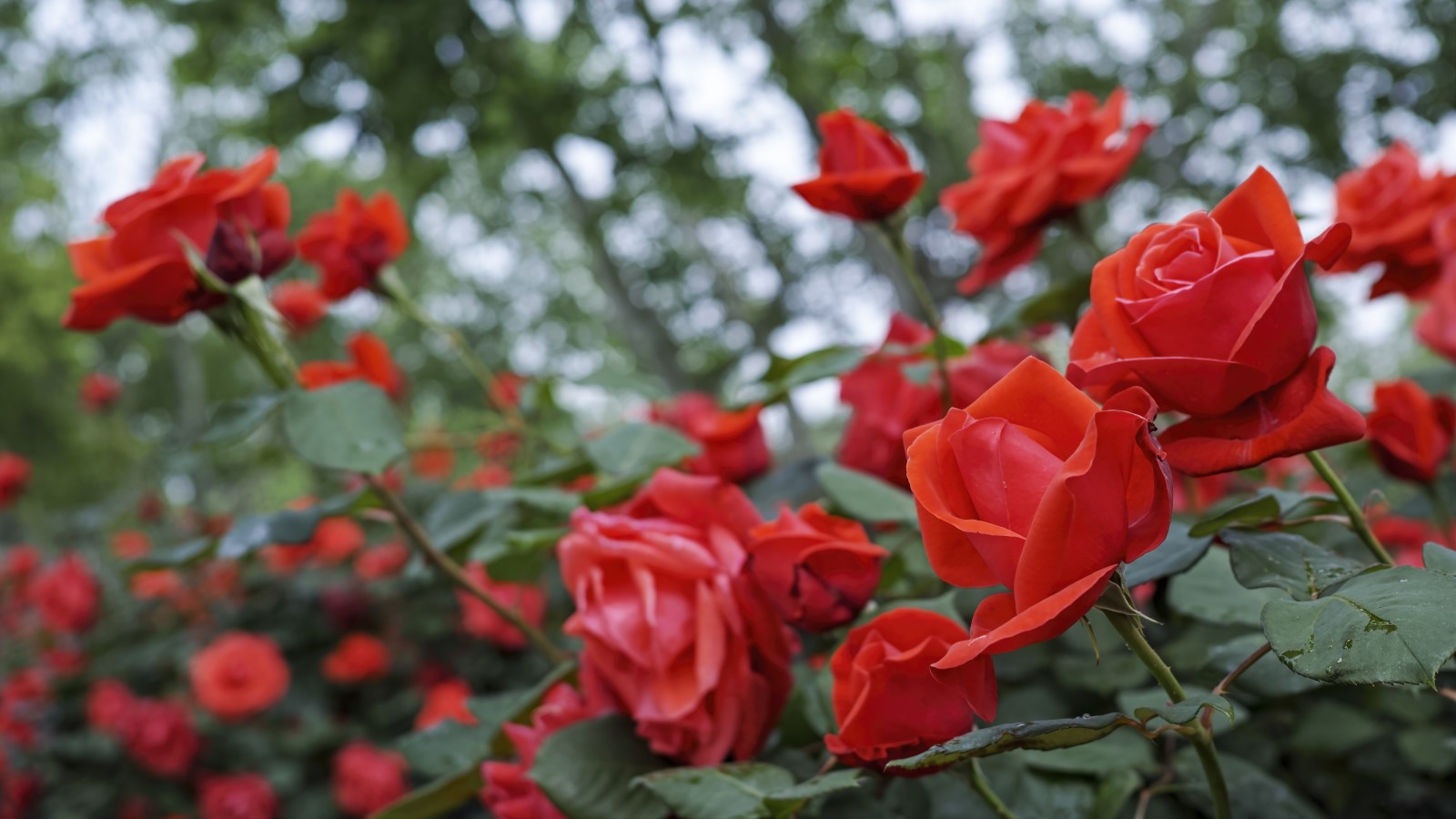

Roses are hugely popular shrubs loved for their beautiful blooms and outstanding fragrance, but there are many potential mistakes a rose grower can fall foul of. These can occur throughout the lifetime of a rose, from planting the shrub through all the annual maintenance.
If you are planning any rose garden ideas, you must make sure to pick the right type of rose for the location and put it in the best spot possible for that plant to thrive. There are also rose growing mistakes to avoid making when it comes to watering and pruning.
Get it right and roses will reward you with a fantastic abundance of blooms and scent. We take a look at six of the most common rose growing mistakes to make sure you get the best from your roses.
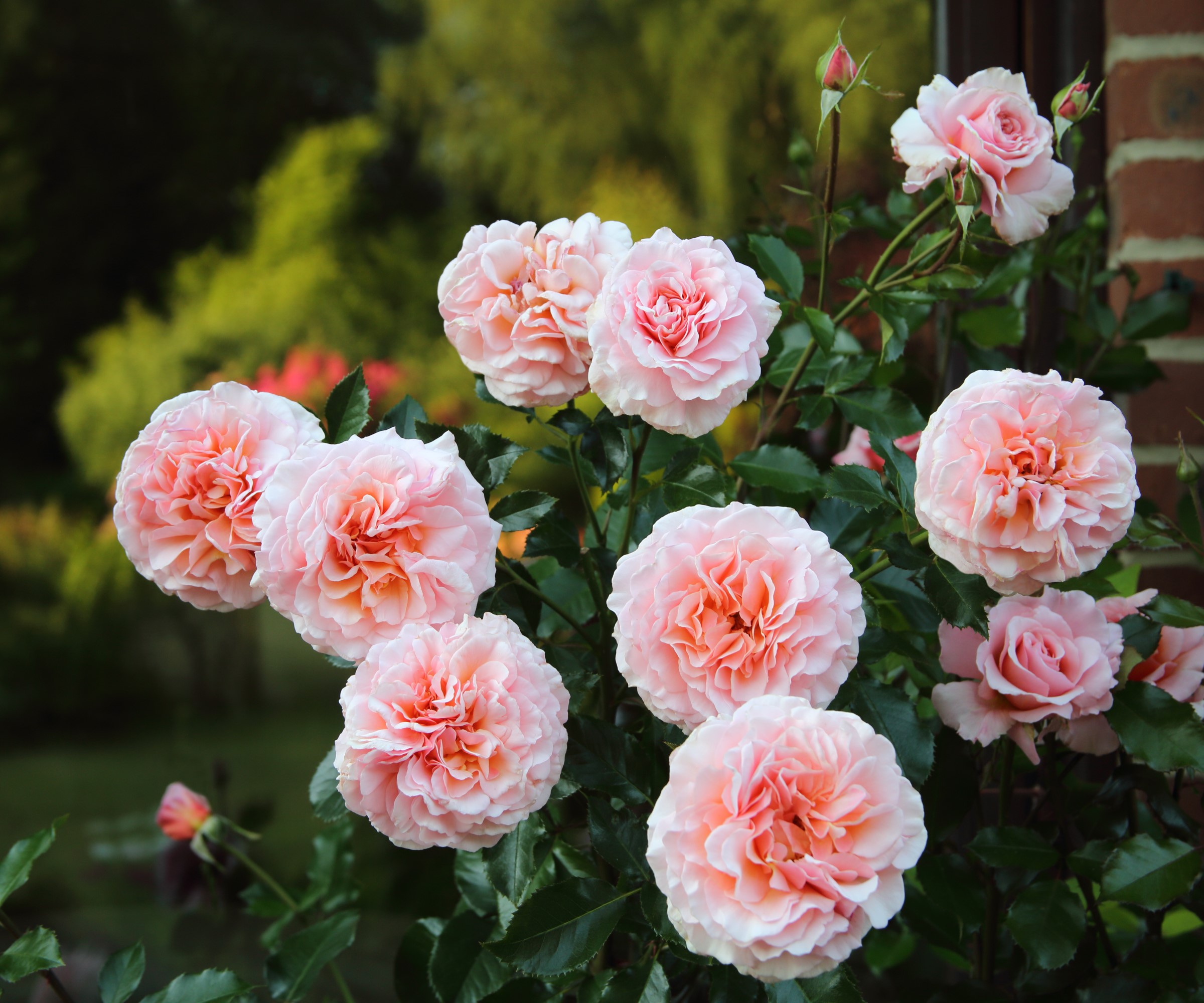
Roses are suitable for many different landscaping ideas
1. Inadequate sunlight
Roses are plants that love direct sunlight and giving them the amount of sun they want to thrive is key to getting the best display. They want a sunny spot to ensure they perform at their best and ideally one with a minimum of six hours of direct sunlight per day.
There are some types of roses that are more suitable for shade, however, for many it will be a case they will not perform their best in shady spots. This can lead to weaker growth, fewer blooms, and an increased susceptibility to rose diseases.
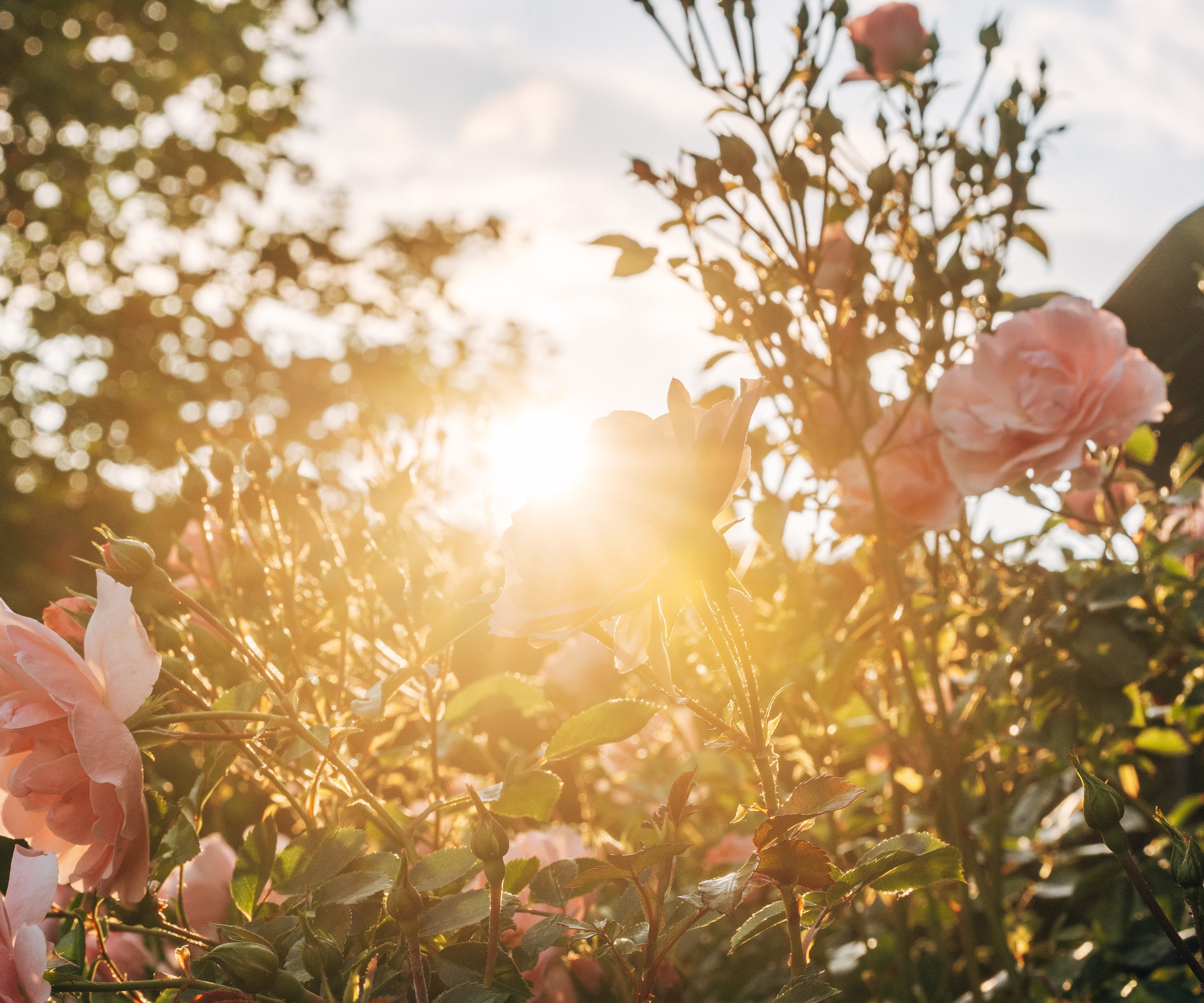
Roses want lots of sunlight to grow in
2. Planting them in the wrong location
The type of rose you choose will dictate their location and the space they need. It is important to research your rose and pick the most suitable spot for them. Or do it in reverse, identify a spot and then look up what types of roses will thrive in it. Don’t try to force things, for example, don't take any of the best climbing roses and try to limit them to a tiny spot – they will not be happy.
The other important aspects to remember for success with planting roses is to avoid windy sites that can lead to wind-rock. Wind-rock can cause roses to grow at peculiar angles, or is even capable of snapping them altogether. Finally, make sure to give the rose enough space and avoid competition around its base. Letting a rose get swamped is a common mistake and ideally you want to give your rose around two-to-three feet of space to grow in. If you do plant a rose in the wrong place, it is important to learn how to move a rose, as doing so incorrectly can destroy your plant.
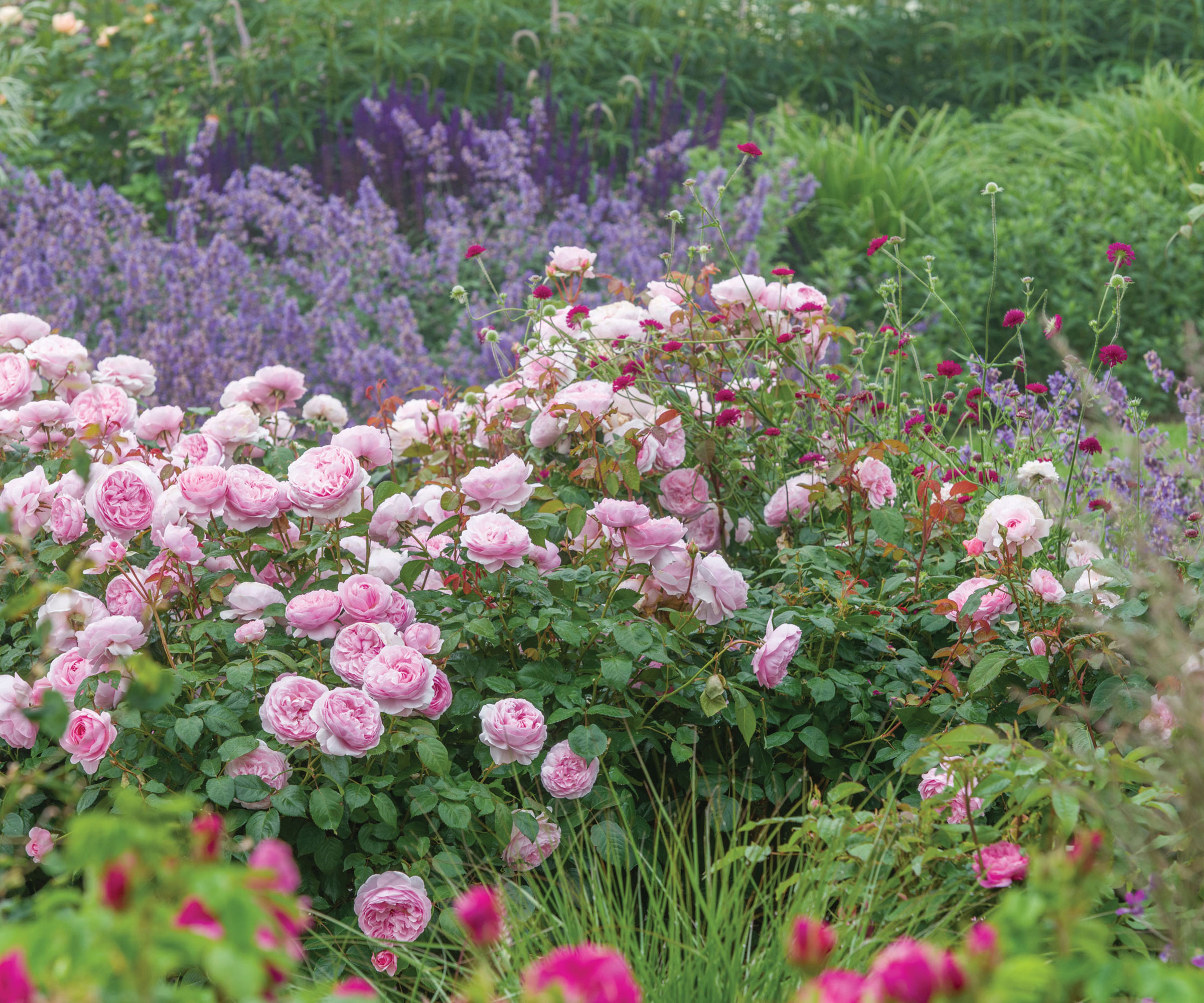
Give roses good space and reduce competition around them
3. Improper pruning
Pruning roses is an important maintenance task to ensure your plants perform at their best. It is important to know your rose types and this will dictate when to prune your roses and the best method to follow. Ignoring the rules would be a terrible rose pruning mistake and can cause irreparable damage to your plants. For example, pruning climbing roses is done at a different time of year to shrub roses. Treating all roses by the same rules is never recommended, so know the right time and method.
Philip Crowther, Business Development Manager at Prestige Flowers, says that both over and under-pruning ‘can hinder the health and growth of roses’. He adds: ‘It's important to learn proper pruning techniques for different rose varieties and prune at the right time to maintain their shape, encourage flowering, and remove diseased or dead wood.’
Whenever pruning, always clean garden tools and sharpen pruning shears to make sure you are making clean cuts. Rough cuts on stems can be excellent entry points for rose pests and diseases. This pocket blade sharpener, available on Amazon, is both portable and convenient, making it ideal for sharpening pruning shears out in the yard.
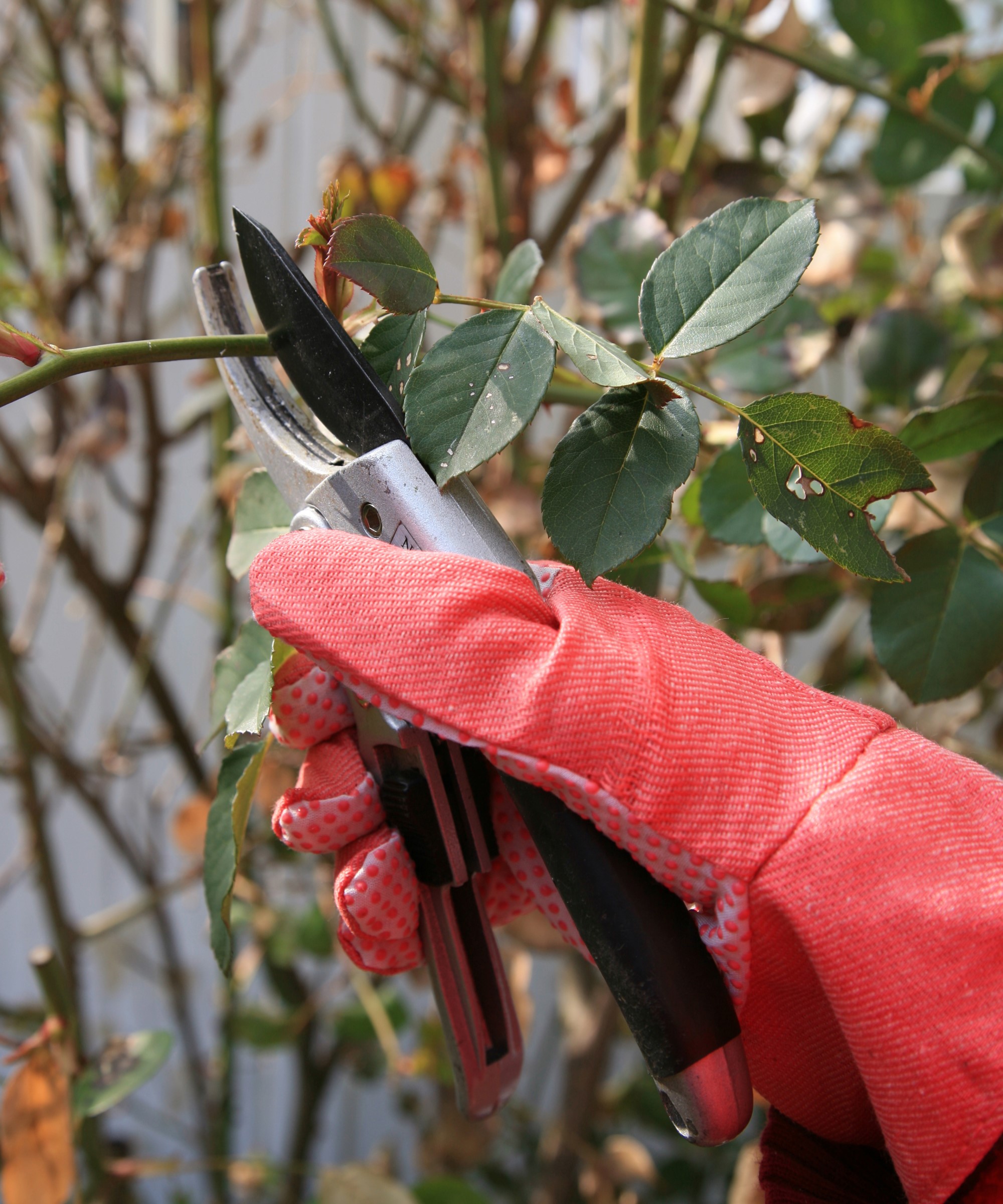
Know the right time and method for pruning your roses
4. Not deadheading
Deadheading roses is very easy and also a very important part of summer rose care. Vicki Parker-Scott, gardening expert and horticultural therapist for Thrive, explains the positive benefits of deadheading, saying: ‘Deadheading encourages more flowers and pruning promotes new growth and helps maintain the plant's shape.’
When you are landscaping with roses it is beneficial to always remember to go out with a pair of pruning shears and deadhead your roses throughout the summer. It can be very quick, from taking off individual flowers as they get past their best to removing an entire truss once all the blooms have gone over.
Not only does a failure to deadhead deprive you of the joys of more blooms that will follow, but spent flower blooms can look ugly and are capable of harbouring fungal diseases. There are several fungal infections that can hit roses, including rose black spot and powdery mildew.
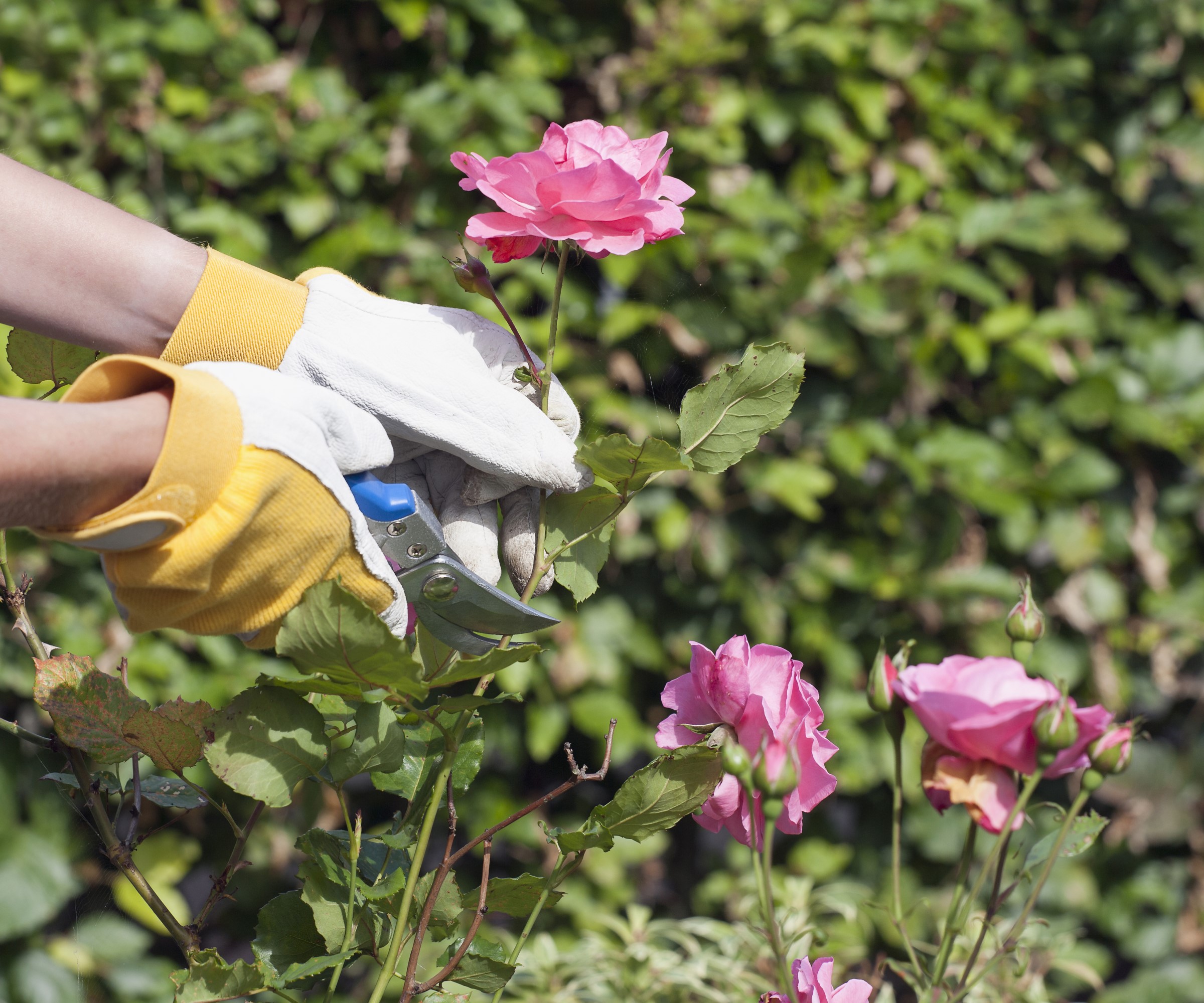
Deadheading should be done regularly
5. Neglecting the soil
It's not simply enough to know when to plant roses, you also want to ensure that the soil in your chosen spot is ideal so they can thrive. Understanding your soil type will help to develop the perfect well-draining and fertile conditions for your roses to grow strong.
Alex Kantor, the owner of Perfect Plants Nursery near Tallahassee, Florida, recommends ‘giving your soil some extra attention’ if you want strong growth and optimal blooms.
‘It's best to plant your roses in rich, crumbly soil that has been enriched with organic matter, specifically aged manure or compost.
‘Mulching on top of the soil can also help regulate soil temperature, retain moisture, suppress weeds, and provide nutrients for your roses promoting healthy growth.’
All roses will benefit from being fed regularly throughout the growing season. Vicki Parker-Scott warns not to make one mistake and fertilize newly planted roses, but start feeding them once they are established. There are dedicated rose feeds available, such as this BioAdvanced All-In-One Rose Care available at Amazon, and rose fertilizers can be applied in either liquid or granular form.
Alex Kantor adds: ‘Using too much fertilizer is another common mistake made with rose bushes, they only require feeding about every 2-4 weeks throughout the growing season and do not need to be fed in the late summer as they prepare for winter.’

Alex is the president of Perfect Plants Nursery and has worked in the horticultural industry for over 20 years. He is an expert on landscape trees, shrubs, and indoor plants. He is passionate about growing and helping others learn the trade.
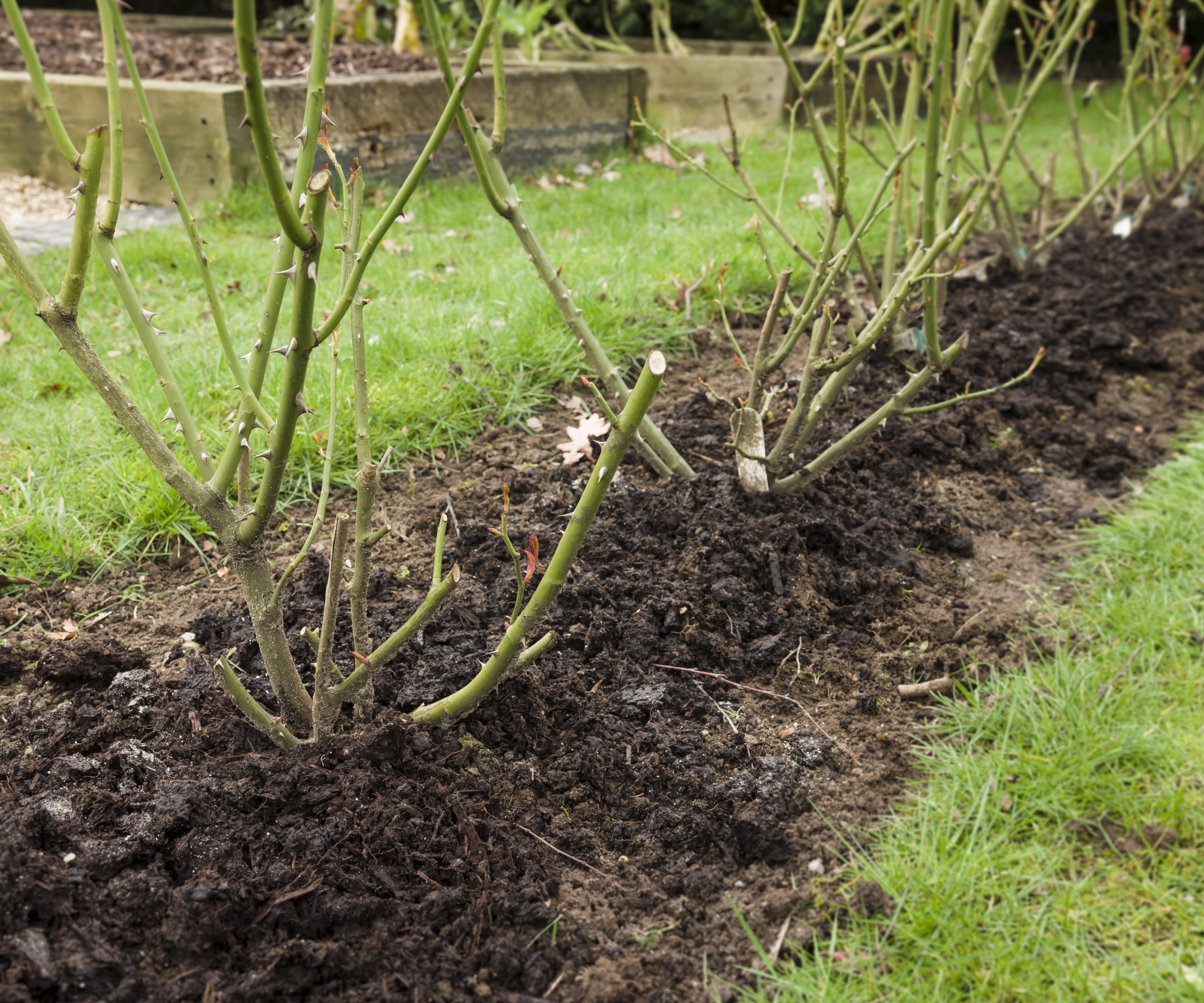
Roses benefit from a good annual mulching
6. Overwatering
Overwatering is a common garden watering mistake that applies as much to roses as any plants in flower beds. Getting the watering right is very important to ensuring the health of your roses and there are several mistakes you can make when it comes to watering roses. Overwatering is capable of causing root rot that can cause the demise of plants.
While the frequency of watering will depend on the climate in your US hardiness zone, it is recommended to water roses deeply and let the soil dry out between watering. This remains the case when watering plants in hot weather, do not just blindly give roses more water as it is hot and always check moisture levels beforehand. A soil moisture meter like this one at Walmart can help give instant results to be able to judge whether to water or not.
When watering roses, also avoid making the mistake of just soaking the foliage. Alex Kantor advises: ‘Direct the water as close to the base of the plant as possible to avoid wetting the foliage or flowers. A rose's most common disease is powdery mildew, which can be identified by a white powdery substance on the leaves and is caused by overwatering the leaves and flowers.’
There are so many great reasons to grow roses. If you are designing a rose garden there are so many fragrant roses in different colors to choose from, it can be like being a kid in a candy store. Whether you have a full rose garden or just a few select plants in your yard, it pays to avoid falling foul of the mistakes listed above. Most of it comes down to a bit of planning and research, and factoring in all the annual tasks required each year. Get these right and your roses will thrive and put on an abundance of blooms year-after-year.
Sign up to the Homes & Gardens newsletter
Design expertise in your inbox – from inspiring decorating ideas and beautiful celebrity homes to practical gardening advice and shopping round-ups.

Drew’s passion for gardening started with growing vegetables and salad in raised beds in a small urban terrace garden. He has worked as a professional gardener in historic gardens and specialises in growing vegetables, fruit, herbs, and cut flowers as a kitchen gardener. That passion for growing extends to being an allotmenteer, garden blogger, and producing how-to gardening guides for websites. Drew was shortlisted for the New Talent of the Year award at the 2023 Garden Media Guild Awards.
-
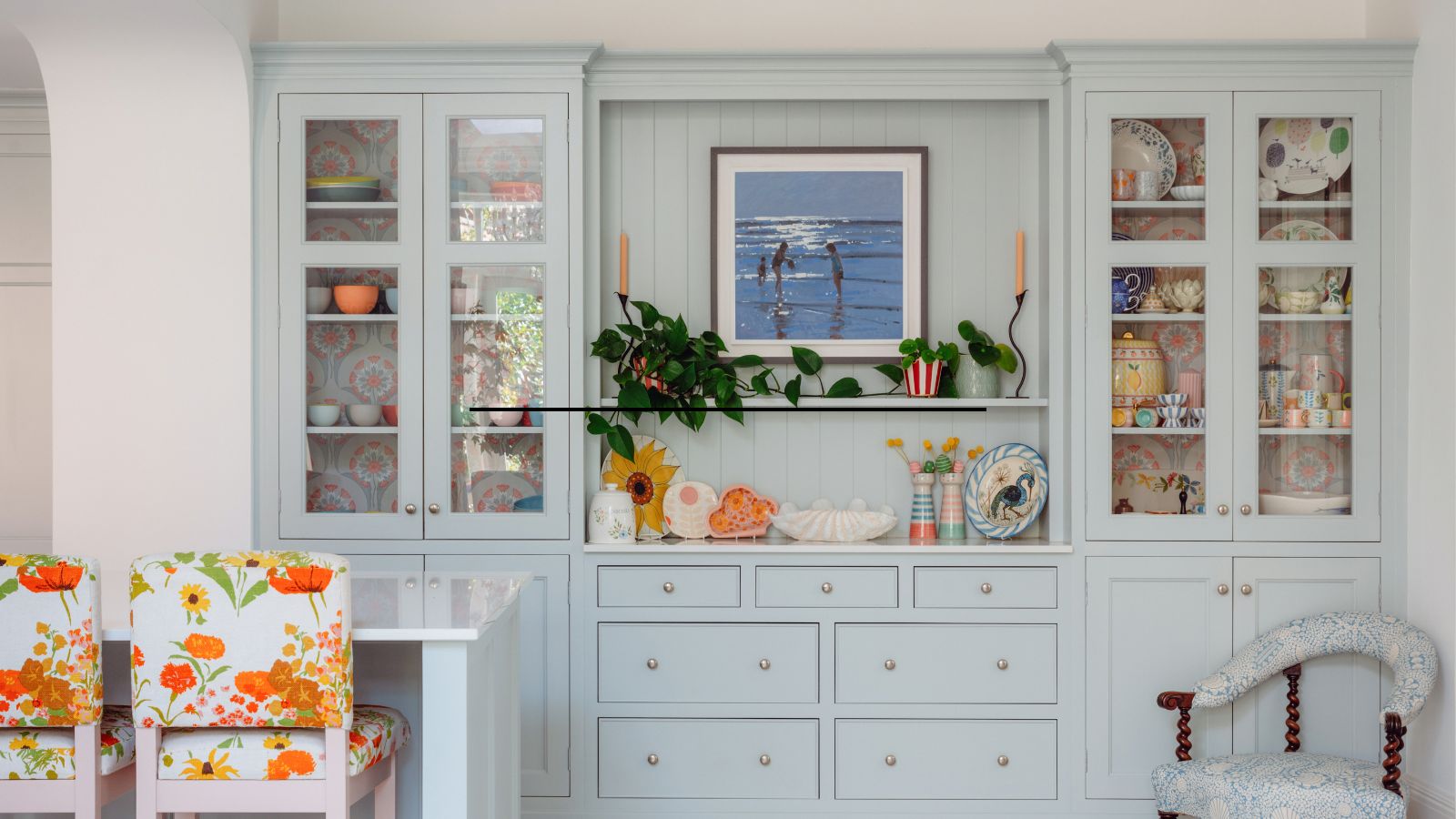 Designers say these are the 10 kitchen cabinet details to know about if you want to elevate your space
Designers say these are the 10 kitchen cabinet details to know about if you want to elevate your spaceIt's all in the details – the designer touches that make all the difference to your kitchen cabinets
By Karen Darlow Published
-
 Garden experts warn against overcrowding flower beds – why this on-trend look is the worst thing you can do
Garden experts warn against overcrowding flower beds – why this on-trend look is the worst thing you can doIt's tempting to create an abundant, overflowing garden bed, but it can limit your plants in more ways than one
By Tenielle Jordison Published